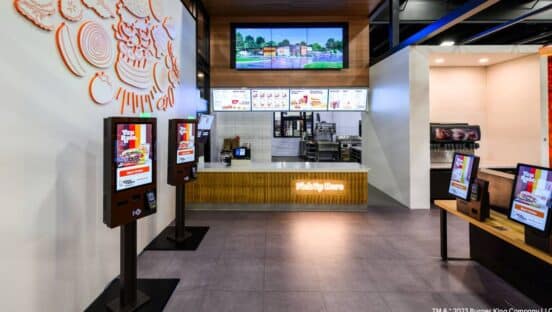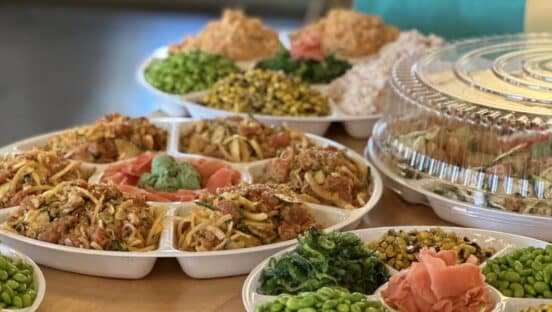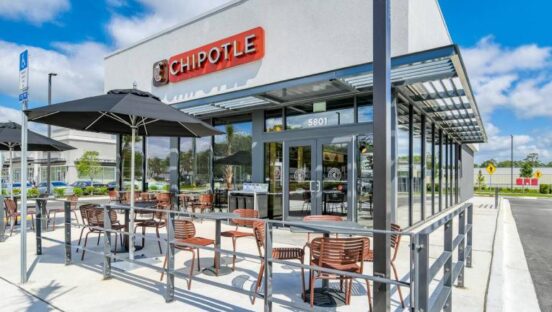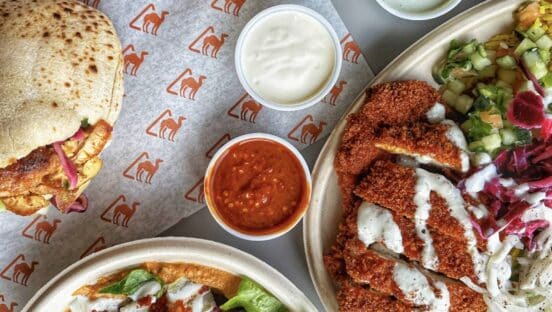Delivery has suddenly become trendy.
Once the specialty of pizza parlors and sandwich shops, the idea of transporting food to consumers’ front doors and workplaces is being embraced or tested by a range of quick-service and fast-casual restaurants. In the past year, chains as diverse as Panera Bread, Starbucks, and Taco Bell have either begun testing or plan to try out a delivery program for individual orders.
McDonald’s this month launched a test in three New York City boroughs using delivery service Postmates to get Big Macs and other menu items to customers any time of the day. Chipotle Mexican Grill also partnered with Postmates to deliver burritos and other orders within the delivery company’s 24 markets. Starbucks will pilot a program in Seattle later this year using that same service but tied to the coffee chain’s mobile app.
Meanwhile, Taco Bell CEO Brian Niccol says his company will begin testing delivery in the second half of the year as part of its “Taco Bell on demand” initiative.
“It’s all about people wanting more and more convenience,” says Dennis Lombardi, foodservices strategist at WD Partners, a Dublin, Ohio, retail design and consulting firm.
“Going to a brick-and-mortar store for a product has been less and less important.”
Delivery also saves customers time and the hassle of going out in bad weather or missing the big game on TV. As delivery grows, Lombardi says, it will lead to more advances in thermal technology—keeping traveling food at the right temperatures—and packaging.
The idea of fast-food delivery is not new. It’s standard among pizza purveyors and sandwich chains like Jimmy John’s and Quiznos, all of whom hire their own drivers. Other concepts have begun following suit in the last few yars. In 2012, Burger King started the BK Delivers service in Washington, D.C., with its own drivers, and has added more markets.
Panera Bread has been testing delivery for more than a year and is operating in two markets with its own drivers and in two markets using third-party couriers, CEO Ron Shaich told investors during an April conference call.
Chipotle tested several delivery services—some trials continue—before partnering with Postmates. There’s no plan for the chain to run its own fleet.
“It would be very hard to staff for [delivery] and it gets us away from the things we really do well—preparing delicious food and providing a really great restaurant experience,” spokesman Chris Arnold says.
One issue for operators to consider is that customers view delivery as an extension of the restaurant, even if the drivers work for a third party, Lombardi says. “You have to make sure they treat your product and your customers as well as you do.”
That’s something Chipotle considered, Arnold says; Postmates was chosen partly due to its “very high standards.” He acknowledges that delivery personnel have an impact on how customers perceive the Chipotle experience.
Postmates has emerged as a leading delivery partner to a growing number of limited-service restaurants.
“On social media, you would see people tweeting, ‘Hey Chipotle, I wish you could deliver,’ or ‘Hey, Starbucks,’” says Holger Luedorf, senior vice president at Postmates. “We hear this over and over again from our partners. There’s a huge pent-up demand.”
Since being founded in 2011 in San Francisco, Postmates has completed 2 million deliveries of food, groceries, office supplies, and other goods. Its delivery fleet has grown to nearly 10,000 couriers, dubbed postmates. The company employs technology similar to taxi service Uber; couriers with mobile phones accept an assignment, place the order often by standing in line, and deliver it. Customers, who can track their order, pay a fee based on distance the postmates travel.
The deal with Chipotle will start deliveries at $4.99 and cap them at $7.99. Tips are extra.
“Initially we did not have a merchant program. We delivered from any restaurant,” Luedorf says. “However, we started to get interest from chains and local players, who realized we were driving huge sales to them.”
The merchant program streamlines the process and allows operators to be a contact point for customers, rather than Postmates.
Smartphone tracking technology will become part and parcel of all food delivery, says Ranaan Cohen, chief executive of Bringg, a tracking tech developer. “This has changed customer standards and expectations,” he says.
Next month, for instance, Pizza Hut will launch a delivery test at 75 Dallas-Fort Worth restaurants, allowing customers to track their delivery drivers and food from the time their orders are made until the pizzas come to their doors.
Israel-based Bringg offers even more capability, not only allowing customers to track their order and view a picture of their delivery person, but also leave the driver a note, like asking to refrain from ringing the door bell because the baby’s asleep.
“The first steps are now happening,” Cohen says, “and we think this will be standard in the delivery business in a few years.”













